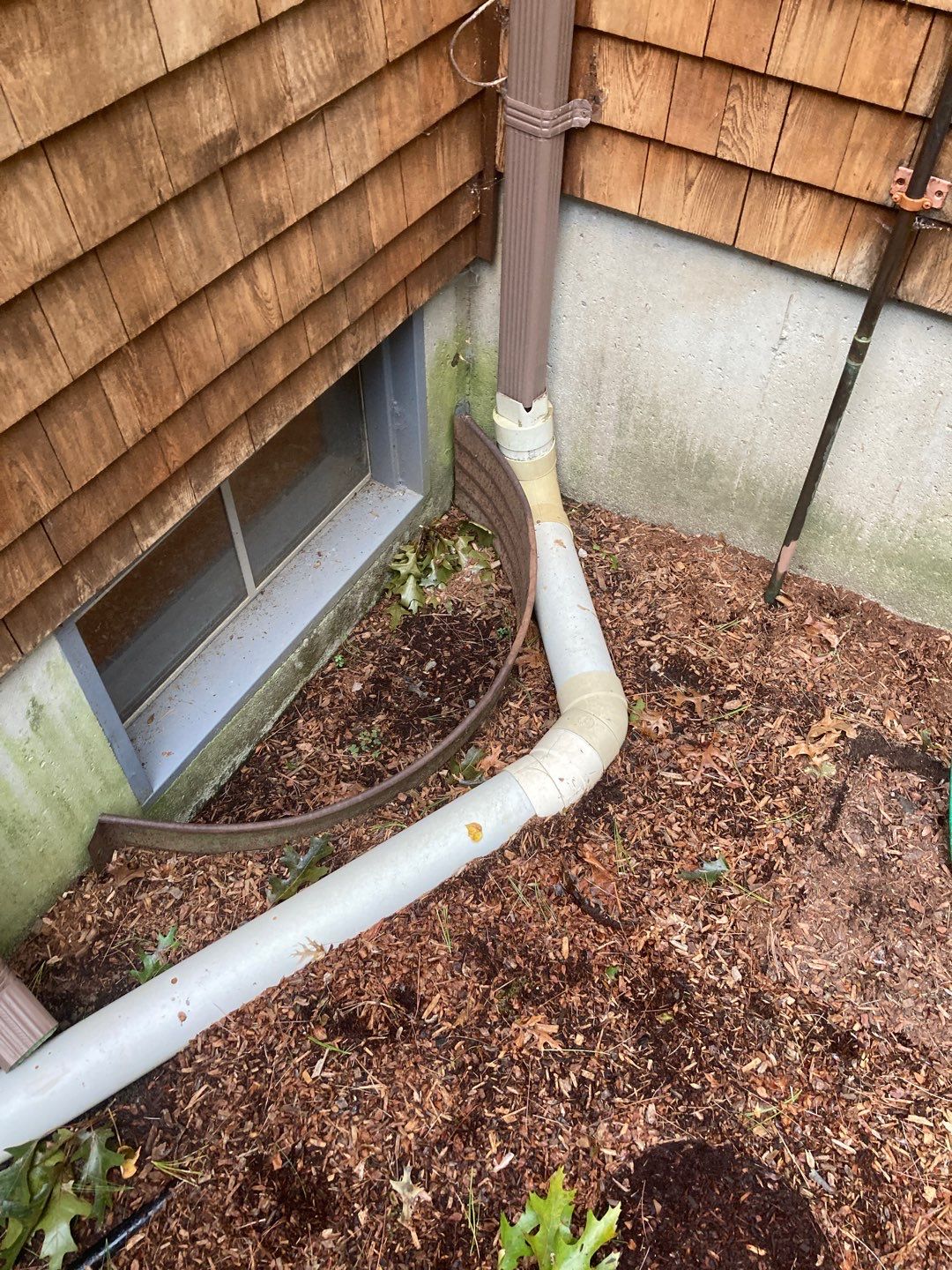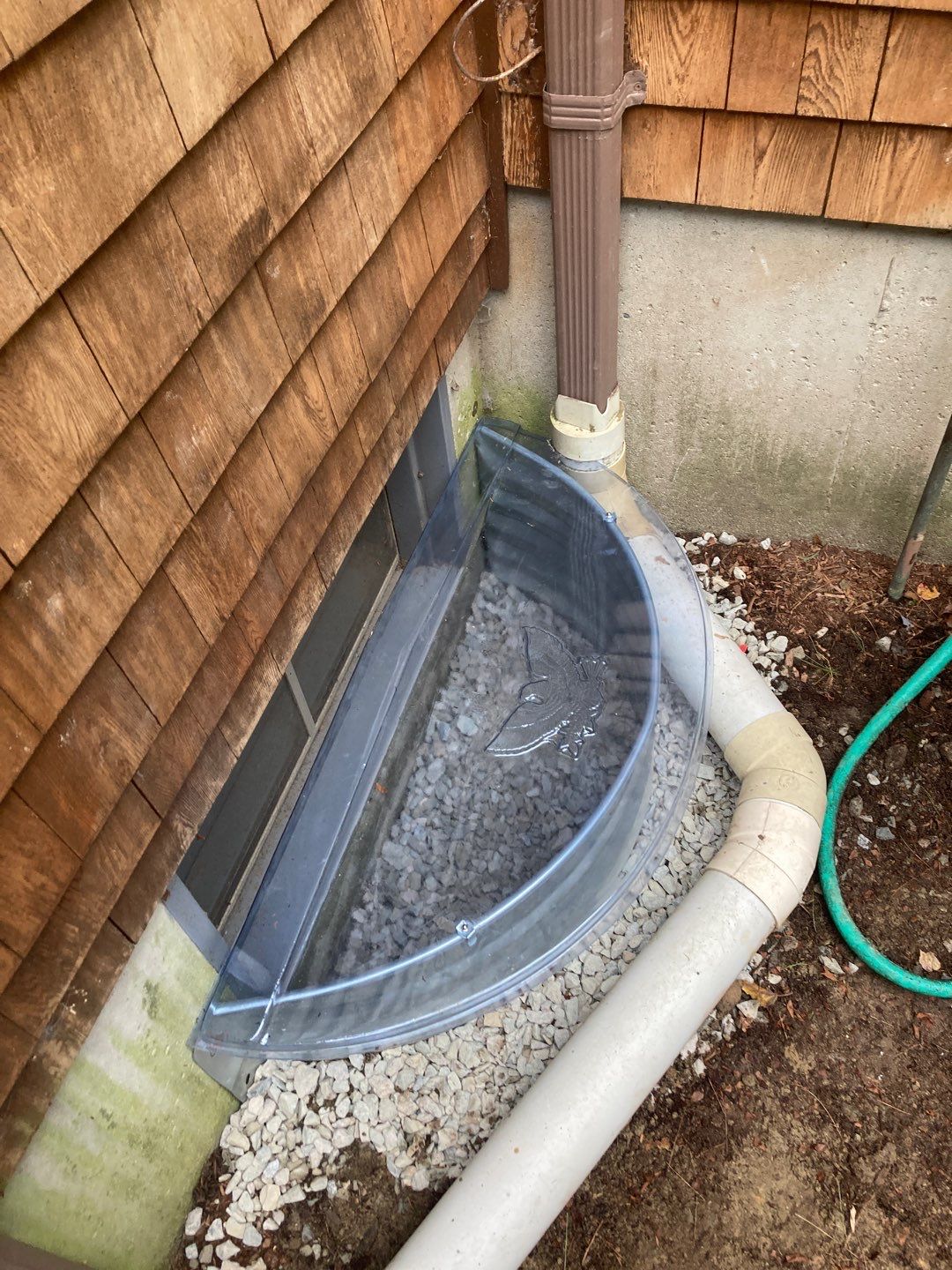If you’ve stumbled upon this article and decided to give it a read, then it’s safe to assume you currently have water filling your window well or have recently dealt with the issue. Maybe it’s been happening for years, and you’re finally fed up and ready to do something, or maybe this is the first time, and you hope to nip the problem in the bud.
No matter what your situation is we can promise you, you’re not alone. In our 30 years of business, we’ve learned that basement windows are one of the leading causes of leaky basements. At their best, basement windows are sources of light and an emergency egress for your home. At their worst, they’re a constant source of headache inducing water intrusion issues.
What to do if your window well is filling with water?
If your window well is currently flooded, then you need to address the issue immediately. As the well fills with water, the water exerts hydrostatic pressure on the walls of the window well and against the window itself. If there are any cracks, gaps, or weaknesses in the window frame or foundation, this pressure can force water to leak into the basement through these openings. In the worst case scenario, you could end up with the interior waterfall feature that you never wanted. So, what do you do?
1. Assess the situation
The very first step is to assess the situation. Identifying the cause of the pooling water may help you reduce flooding in that window well right away. Even if you can’t solve the problem immediately, identifying the issue while it’s happening can help you implement the best solution.
Some questions that you can ask yourself:
- Do you have a window well drain? Is it blocked by debris?
- Do you have a window well cover?
- Is water pooling around your window well?
- Is there water coming into your basement through the window? Where is it coming from?
- Are there any downspouts directing water close to that area?
2. Prevent further water damage
If you have water actively leaking through your basement windows, then you’ll want to do your best to prevent further damage. You should:
- Use absorbent towels or rags around your window to soak up water
- Place down absorbent materials like sandbags or absorbent pads to collect leaking water
- Elevate items in danger of getting wet
- Set up a wet/dry vac to soak up water off the floor
- If the flooding is extensive, buy or rent a pump to remove water from your basement
3. Document the issue
When your basement is flooding the last thing on your mind are pictures and videos, however, documenting or taking notice of the water and where it’s coming from can go a long way when identifying the appropriate solution to your problem.
4. Drain your window well
As soon as it’s safe to do so you should drain excess water out of your window well. The more time hydrostatic pressure has to push against your window the more likely it is to cause damage and leak. After the rain stops use a pump or a wet/dry vac to get water out of that well.
How to fix a window well filling with water:
Now that you have addressed the water leaking into your basement, assessed/documented the situation, and drained your window well it’s time to identify a solution. If you were able to observe your window well actively filling with water, then you may already know the cause.
Window wells are not a complex system. There are a couple common causes of failing window wells. Addressing each of these will have you well on your way to fixing your leaky basement windows. When in doubt, reach out to a professional waterproofing company like Drycrete Waterproofing for a free on-site assessment.
1. Add a window well cover
Let’s start with the simplest solution and work our way towards more complicated. You’d be surprised how many homeowners have flooding window wells, but no window well covers. A window well cover is designed to divert water, snow, and debris away from a window well. Simple enough right?
If water and snow are allowed to collect in your window well then you could end up with those leaky basement windows we’re trying to avoid. If debris gets into the window well it can block up drainage material like crushed stone, cover up drainpipes, and raise the grade of the soil. Raising the grade would mean less space for water to accumulate if it does make its way into the well.
2. Clear debris and obstructions
If you have a drain installed in your window well it is extremely important to regularly clear out any debris that collects in your well. Dead leaves, dirt, sticks, etc. clog up the inlet and your window well drain is rendered ineffective. If your well is actively flooding this may be the first thing that you check.
At least once a year, usually at the start of spring, you should thoroughly clean your window well. Pull out any debris that has made its way in there and dig out the well to ensure there is at least 6 to 8 inches of clearance between the bottom of your basement window and the soil below.
3. Fix grading
Grading refers to the slope of your yard. An excellently graded yard should be sloping away from your foundation on all sides of your home. Think of your home as a castle and the water as an invader. You want the high ground. The same goes for your window wells. You should never see water pooling around your well. Naturally, the well is the lowest area so any pooling water will want to collect in there. Make sure the area around your basement window is sloped away from your home. This will work in conjunction with your cover as water is diverted off the top and down slope.
4. Redirect gutter downspouts
Here’s another common issue that’s often overlooked. In any instance, your downspout should not be releasing water near your foundation. You should have an extension that’s leading water away from your home and down slope. Having your gutters letting out right near your window well is a recipe for disaster. The excessive water can saturate the soil lead to flooding wells and soil erosion which can negatively affect your yards grading.
5. Improve Drainage
Here’s the big one. This is the most important factor on this list. If you have poor drainage in your window well then it will be at risk of flooding. We have customers call in all the time saying, “My window well just filled with water and my basement window leaked into my finished basement. How can I make sure this never happens again?”
The honest truth is, there’s always a risk, but we can put systems in place to make sure the possibility is much lower. The first thing we’re going to want to address is drainage. So how do we do that?
Window well drains:
Window well drains are drainage systems designed to prevent water accumulation in window wells. They usually consist of:
- A drainage pipe installed in the well with an inlet to collect and divert water.
- Gravel or crushed stone surrounding the pipe for easy drainage.
- An outlet connection that will sometimes be linked to an internal or external French drain or directed away from the foundation and daylighted to a designated drainage area in your yard.
Window well drains can be effective, but they need to be carefully maintained on a regular basis to keep them operating efficiently. There are handful of things to consider if you’re contemplating a window well drain install:
- Outdoor drainage pipes are prone to clogging and will need to be regularly cleaned to prevent complete failure.
- If you plan to tie your drain into an existing external French drain it becomes significantly more difficult to snake out. The length of the drain as well as the various junctions make a snake job more complicated.
- If you plan to tie your drain into an existing internal French drain, then we would advise that you don’t. Doing so gives water a direct route into your home and could potentially overwhelm the system. You also run the risk of debris from outside collecting in your French drain and eventually making its way into the sump pump and burning out the motor.
- If you plan to daylight your drainpipe, then you have to inspect the outlet on a regular basis. If it becomes blocked the system will not work properly.
- The materials you use can make a difference in quality. Many people use corrugated pipes, but we’d advise against that. It’s flexible and easy to work with but the corrugations provide ample space for debris to build up. It’s also not very durable and is prone to being damaged.
- We already touched on this in this blog but you need to ensure no debris blocks up the window well drain inlet.
As you can see there are many things that can go wrong with a window well drain. For this reason, it does not come highly recommended by Drycrete Waterproofing as an excellent solution to a window well filling with water. We’ve seen countless failed systems and do not usually install them ourselves.
More drainage material:
The gold standard of window well installation is having enough drainage material to ensure your window well never has a chance to fill with water. So, what does that look like?
- Dig down outside of your basement windows all the way to your foundation footing. Make sure the hole is wider than your well to account for enough drainage material.
- Fill the hole with 3/4-inch crushed stone or other drainage material, leaving 6 to 8 inches of foundation wall exposed under your basement window.
- Install your window well. The size will vary depending on the size of your basement window.
- Backfill around your window well with more drainage material.
- Utilize all the other solutions on this list including custom fit covers, grading, regular maintenance, and gutter downspout redirection.







Installing your window wells like this will direct a good amount of water underneath your home. To avoid creating new issues such as hydrostatic pressure leading to seepage, this system will work best with an interior/exterior French drain that can collect that water and lead it away from your home.
When in doubt Seek Professional Help
Basement waterproofing should be thought of as a system rather than one-off solutions to specific problems. The most effective basement waterproofing techniques involve various components that work together in concert to keep your basement dry. This is important to consider when addressing any waterproofing issues including window wells.
Many of the solutions on this list can be a weekend DIY project completed by homeowners. However, when it comes to properly installing a window well, with or without a drainpipe, it may be wise to contact a professional. They can inform you of the possible pitfalls and how to avoid them. Basement waterproofing professionals should have a deep understanding of how moving water around your property will affect your home. The last thing you want is to fix your window well issue and end up with water intrusion elsewhere.
Any reputable basement waterproofing company will offer free on-site assessments. They can help you address the source of water intrusion, the best solution, and offer expertise on a variety of other water management techniques.
Stop Those Flooding Window Wells for Good
Tackling a window well filling with water can be a stressful experience but armed with a bit of wisdom and a willingness to take action, you can rise to the challenge. To sum it up: First, size up the situation and pinpoint the root cause. Then, take immediate steps to halt any further water intrusion and document the issue. Once it’s safe, drain that well as soon as possible.
When it comes to resolving the issue, you’ve got options. From adding a trusty window well cover to regular debris patrol and perfecting your yard’s grading, there are steps you can take. But for the ultimate solution and to dodge potential pitfalls, consider recruiting the services of seasoned basement waterproofing pros.

